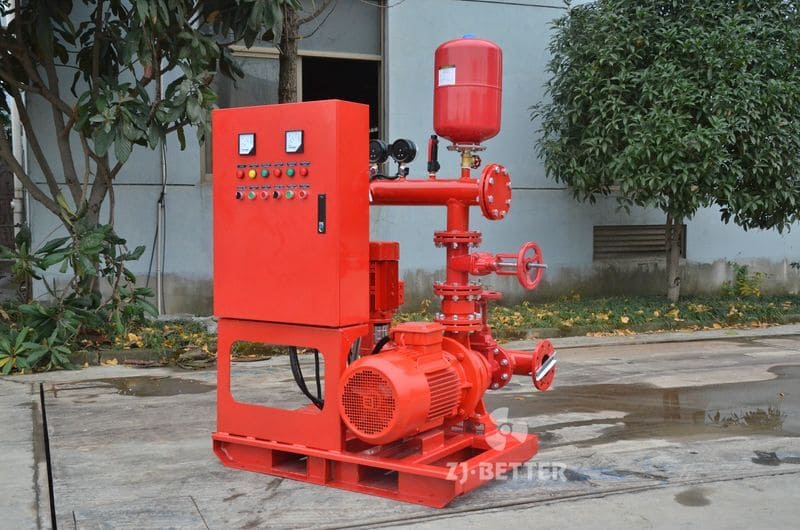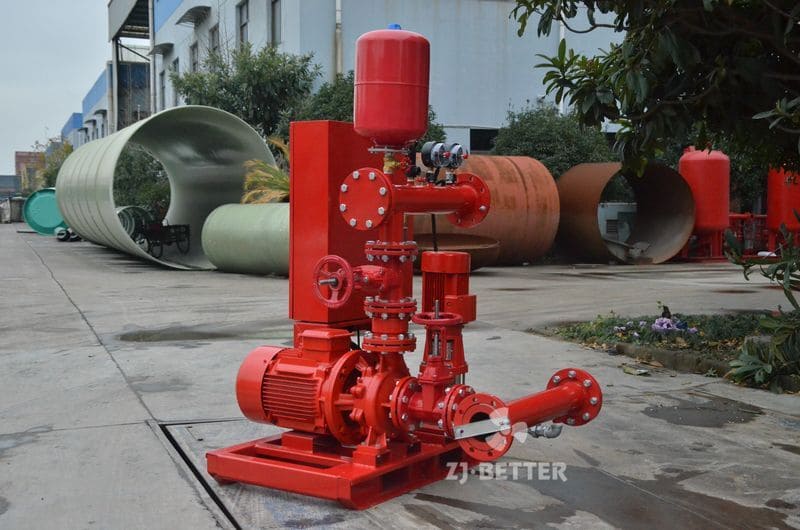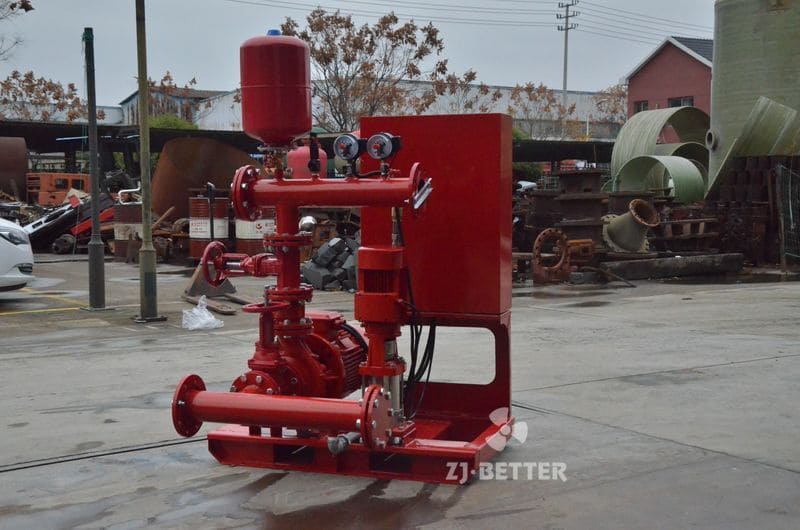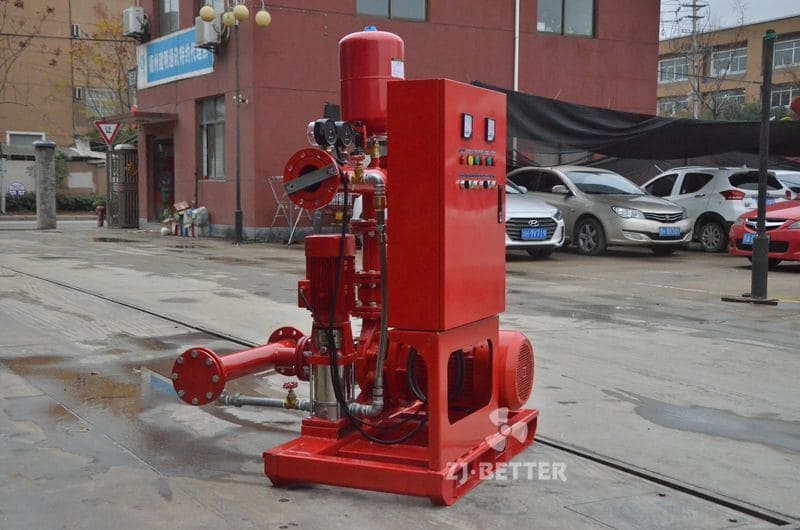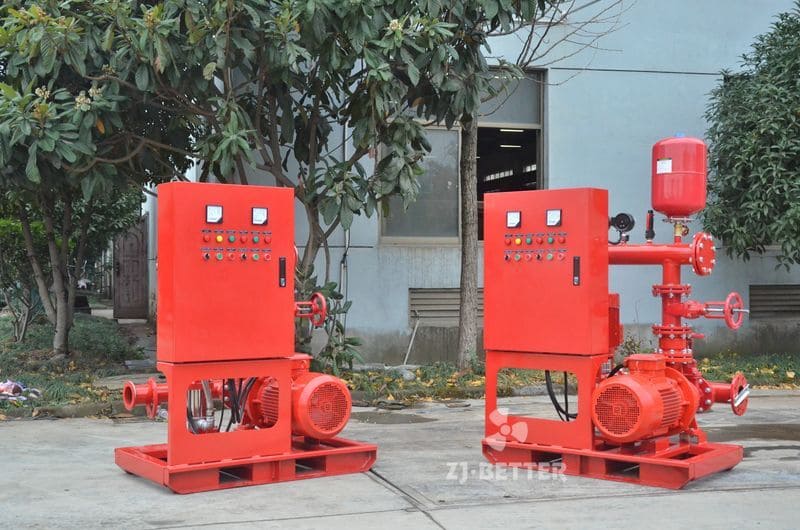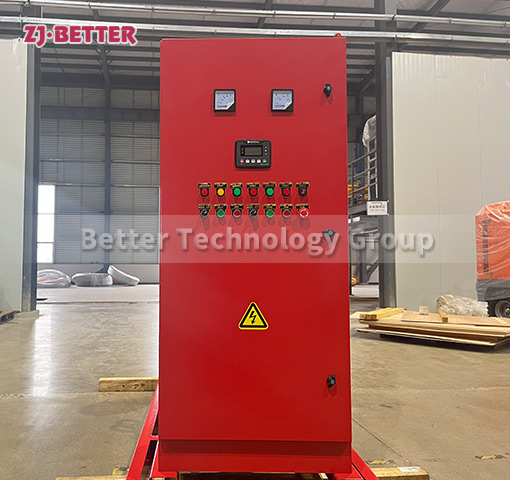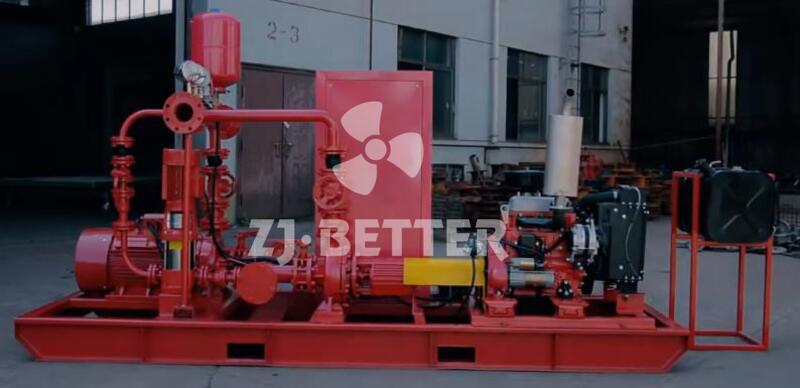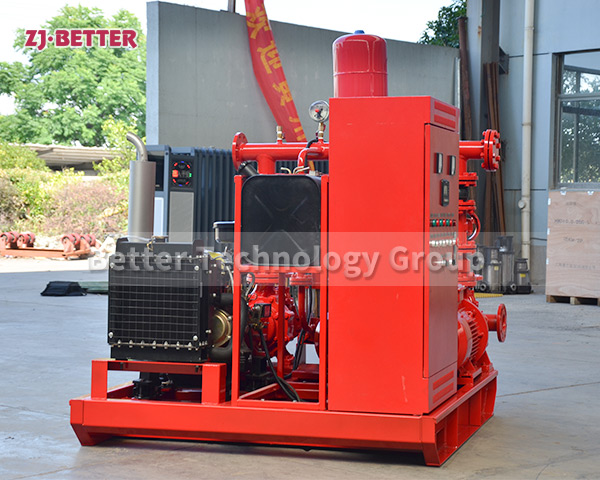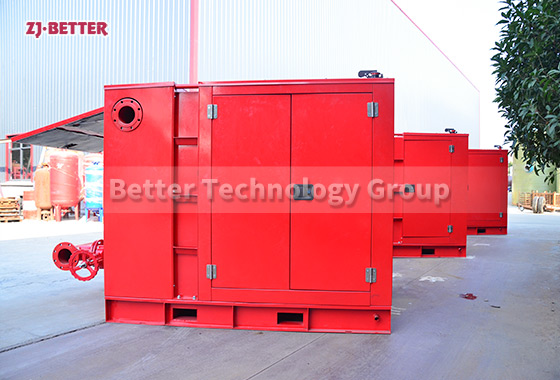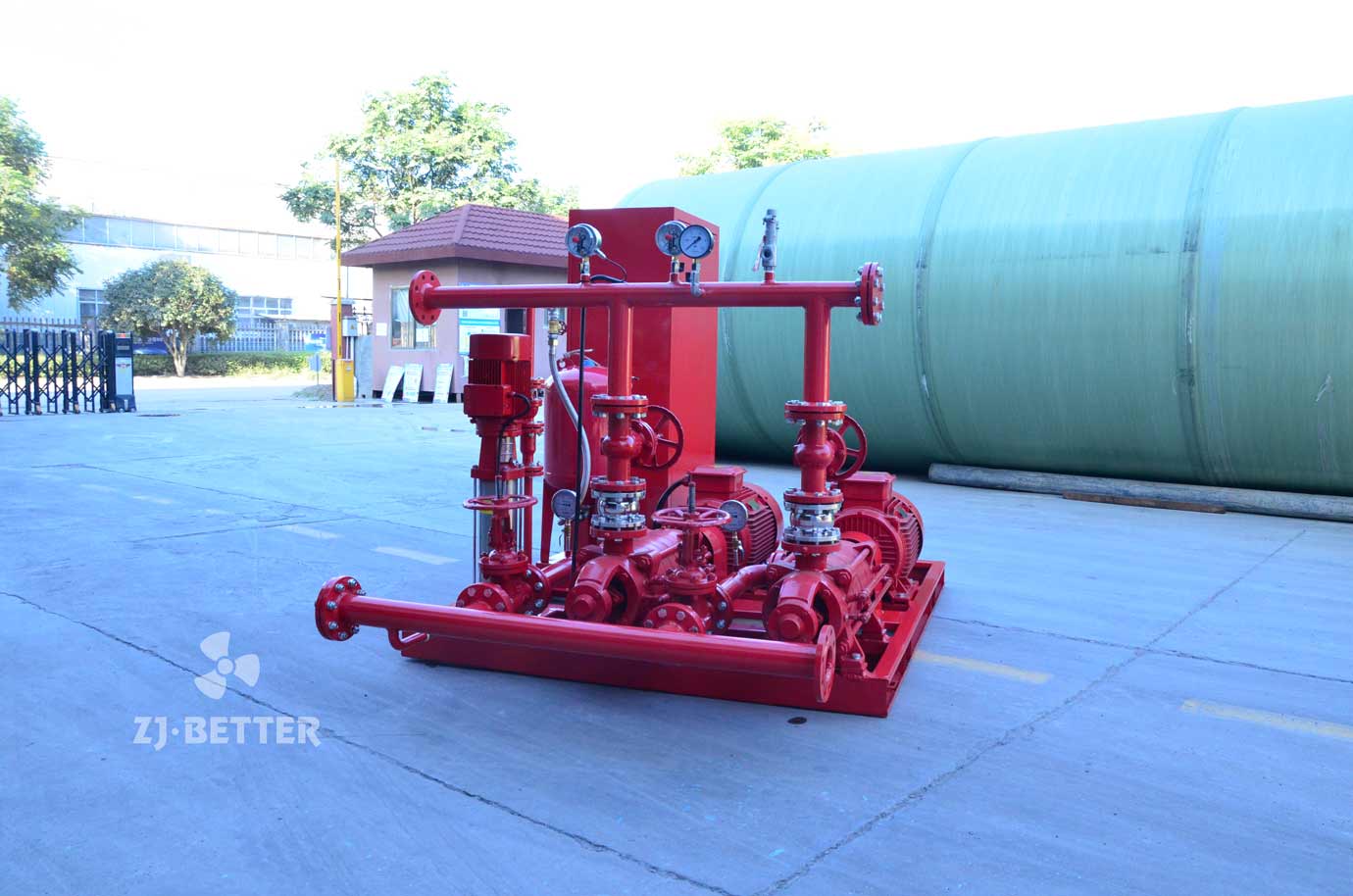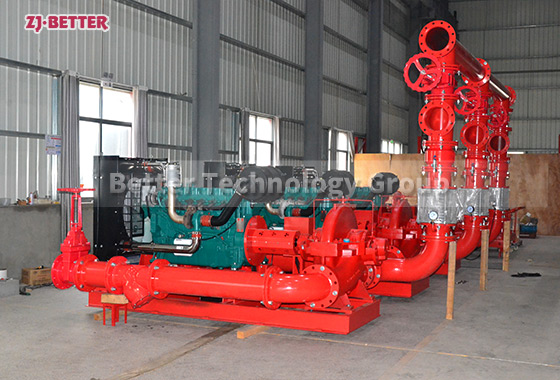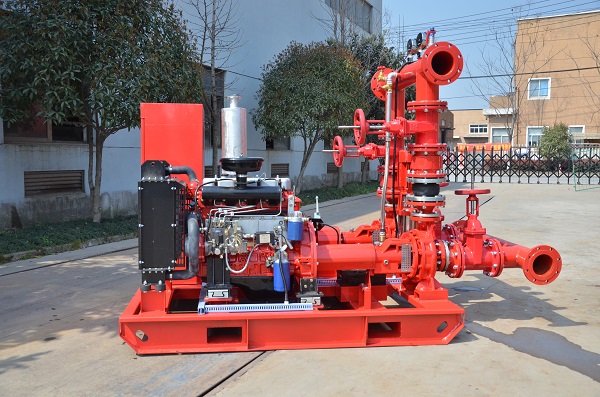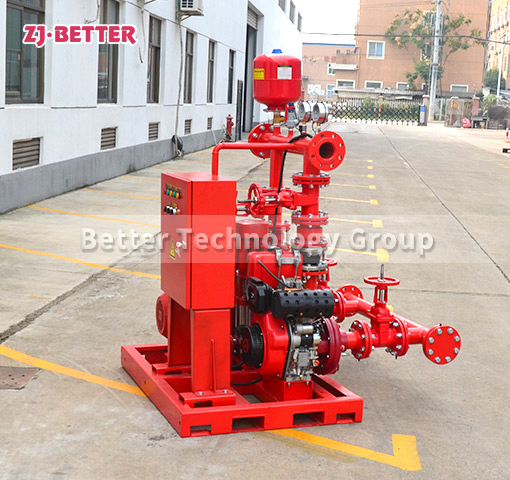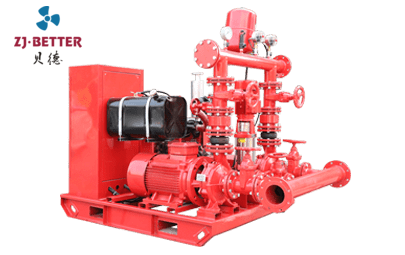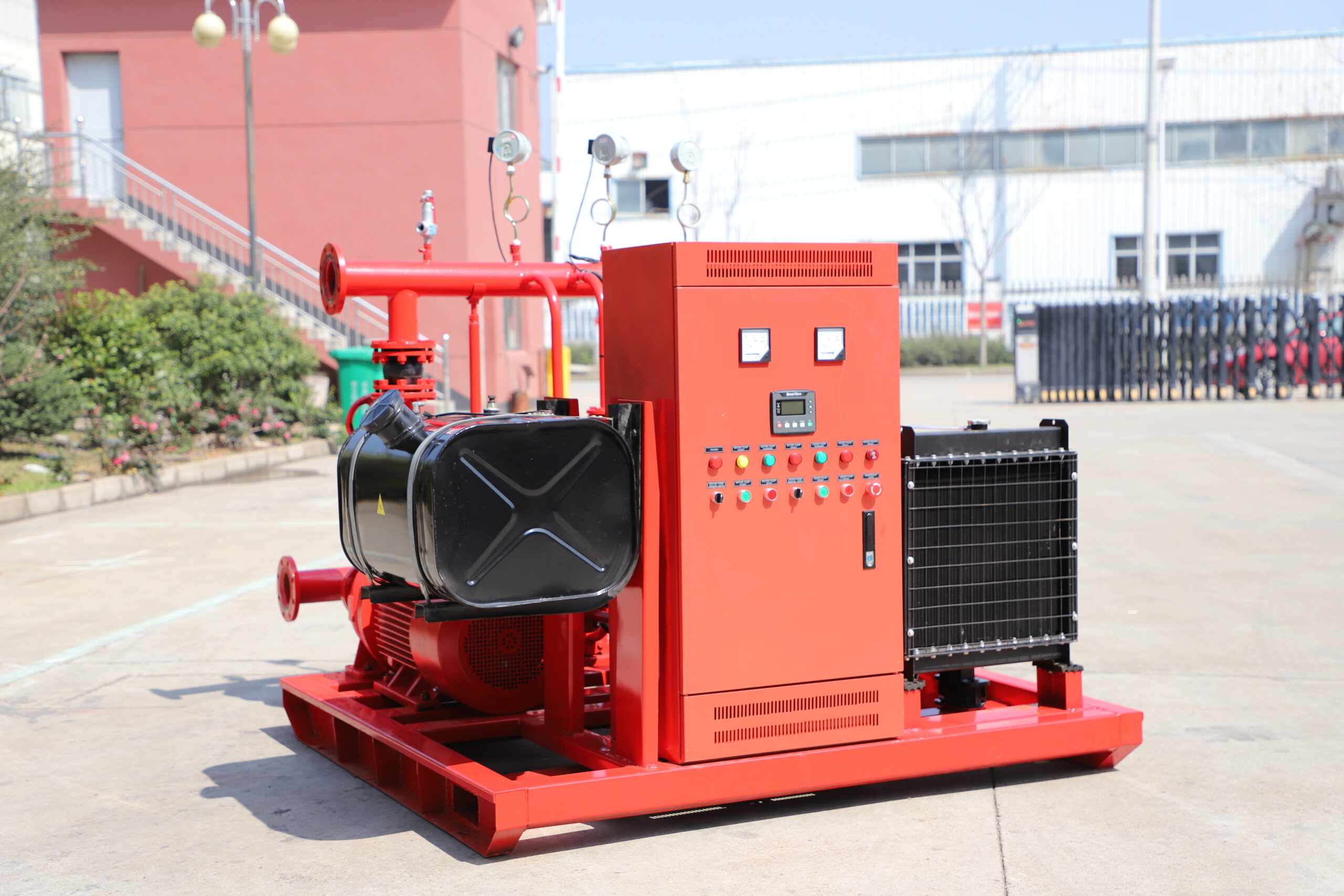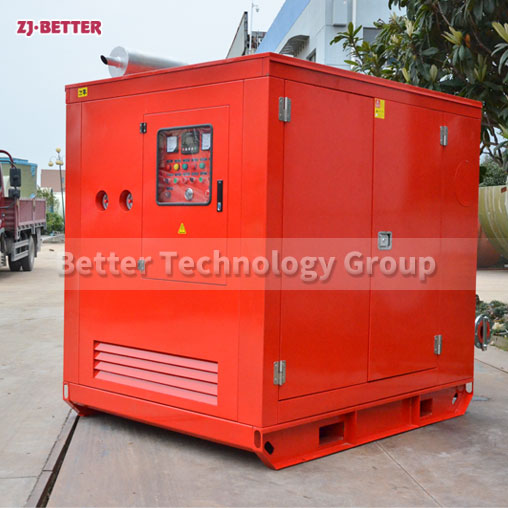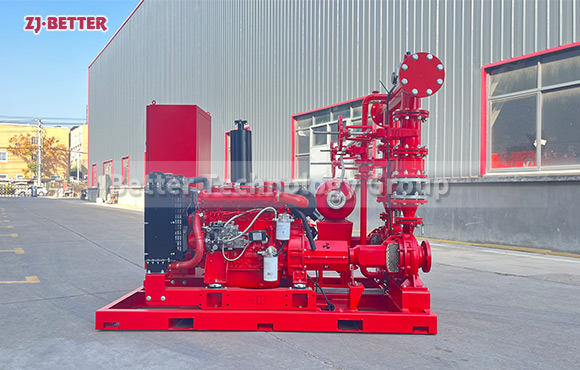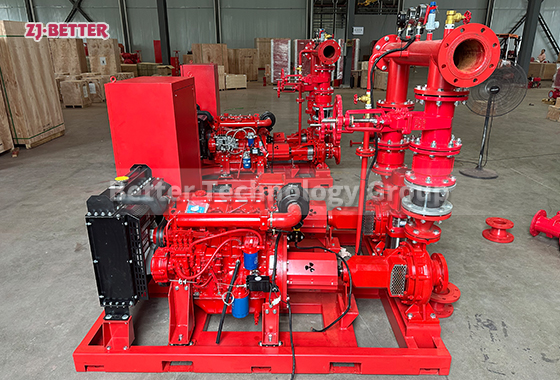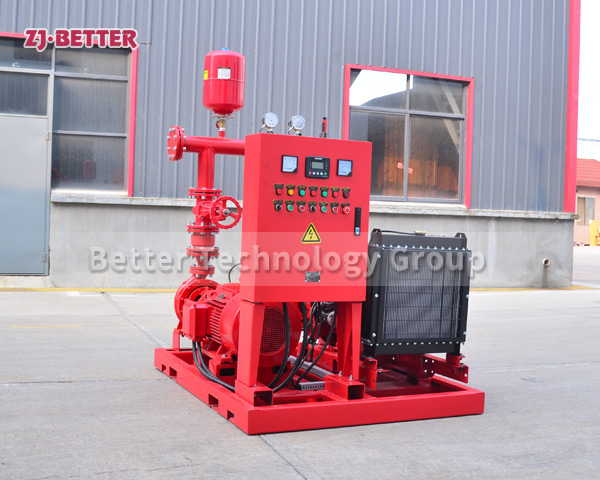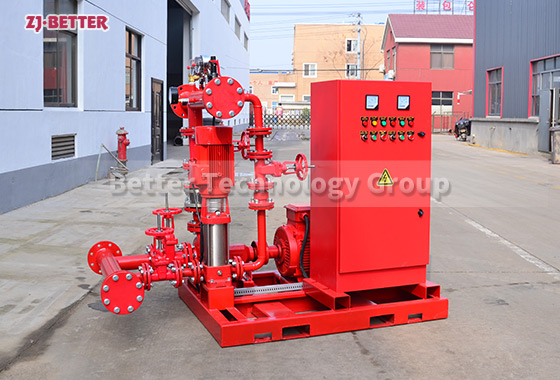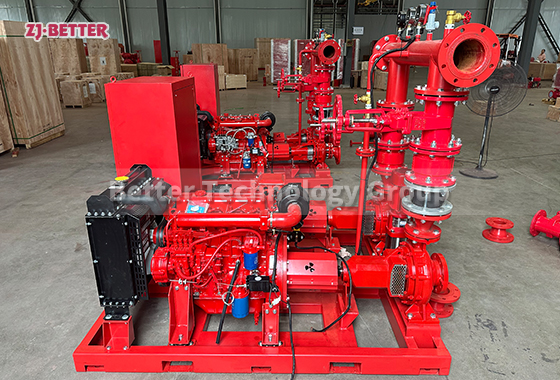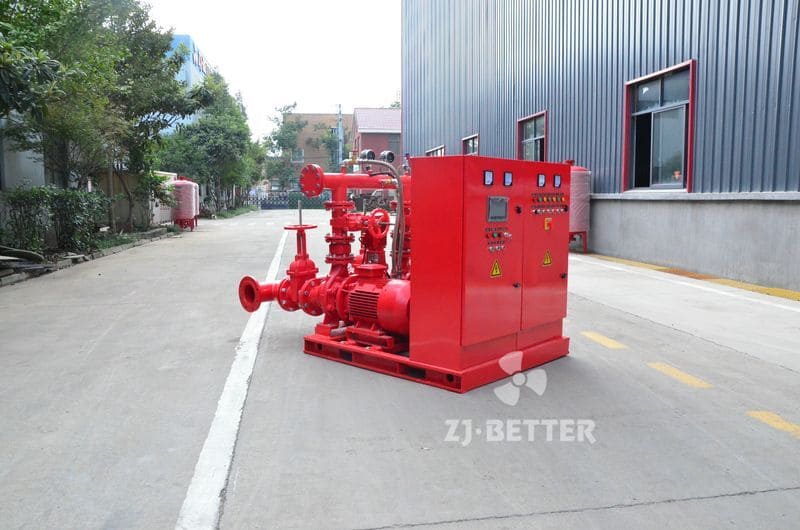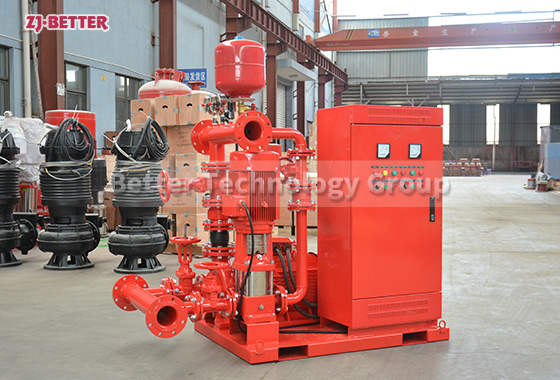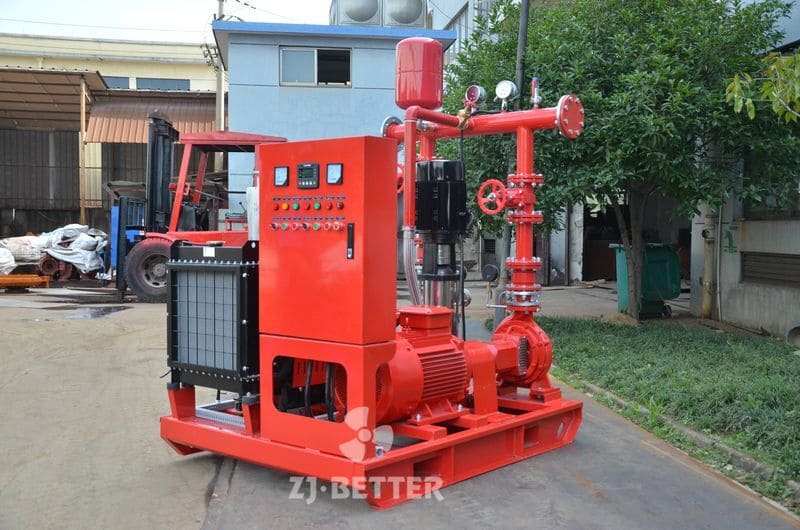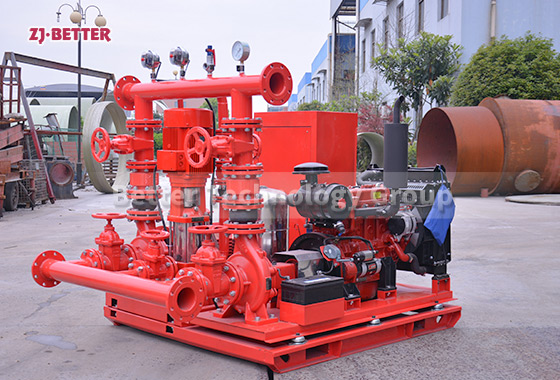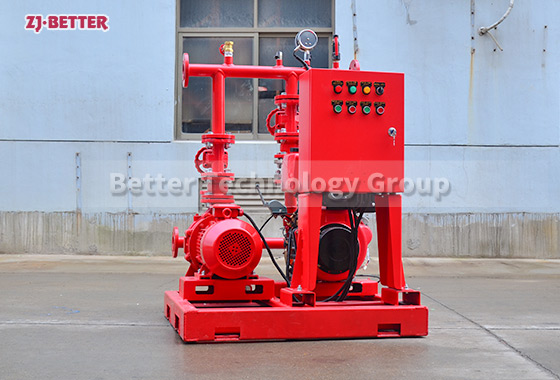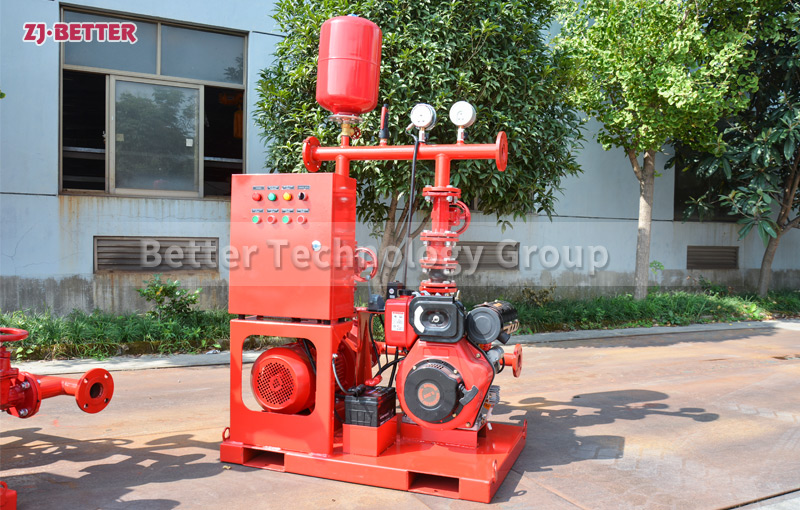Electric Fire Pump Equipment
All accessories of EJ small fire complete water supply equipment are assembled according to the standard (NFPA20). Its configuration depends on the customer’s needs, or the number of pumps and the type of electric pump. EJ small fire pump group consists of electric pump and jockey pump. EJ small fire-fighting complete set of water supply equipment has reasonable layout, firm installation, reliable connection, compact structure, neatness and convenient maintenance.
1. Electric pump, can use single stage pump, horizontal split case pump, end suction pump, multistage pump, material can be cast iron, stainless steel, and bronze impeller.
2. Jockey pump, horizontal or vertical, capacity will be small, but head should be higher than electric and diesel engine pump;
Jockey material casing :cast iron ,shaft and impeller SS304.
3. Control panel: Auto Control of electric pump, and Jockey Pump with overload, over current protection.
4. Accessories: check valve, gate valve, pressure vessel, generally 0.6mpa, 1.0mpa, 1.6mpa, Pressure Gauge, Pressure Sensor, Common Pipe for Suction and Discharge, Flexible Joints andFlanges,Commonb Base plant.
Application Scope
Equipment for warehouses, docks, airports, petrochemical, power plants, liquefied gas, textiles, ships, oil tankers and other occasions of a fire service.
Using Instruction
Altitude ≤ 1000m;
Ambient temperature: +5 °C ~ +40 °C;
Relative humidity: <= 90%.

